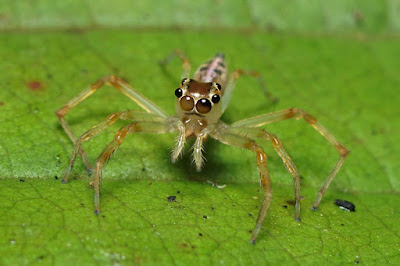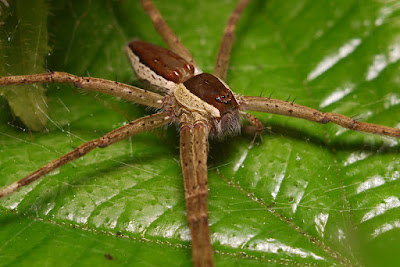Because of the sheer number of spider species this region, identifying a spider can be a daunting task especially for the amateur naturalist. However, in many cases the arrangement, size as well as the number of eyes can greatly help one identify the family or genus of a spider.
 |
| Jumping spider has two enlarged forward pointing eyes. |
For a large majority of spiders, eight eyes in four pairs is the norm. However, spiders with three pairs of eyes or even eyeless also existed but they are rare. These simple eyes, also known as ocelli, are generally arranged in two rows, and their relative size and position are useful features to look for when identifying a spider.
 |
| Nursery web spider has similar-sized eyes. |
The jumping spider, for example, has enlarge middle two eyes of the front row that point forward. The wolf spider also has two large eyes, but they are of the second row. The nursery web spider might be mistaken for a wolf spider, but their eyes are approximately of the same size. The lynx spider, by contrast, is quite unmistakable because it has a unique eyes pattern often described as hexagonal.
 |
| The hexagonal eye pattern of lynx spider. |


